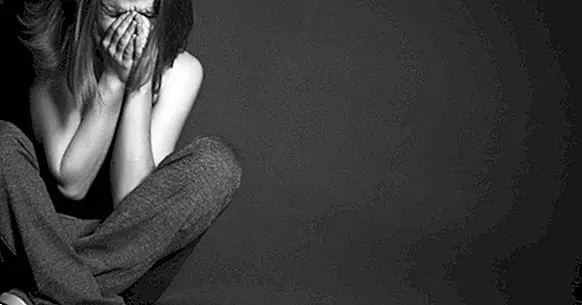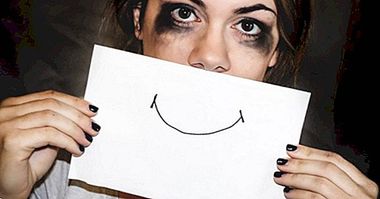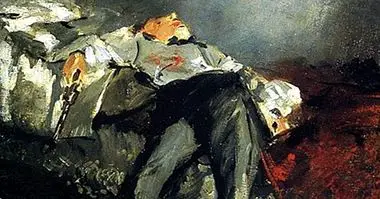Bully-victims: victims of bullying turned into aggressors
Peer bullying or bullying is becoming a common topic in our society . At European level, an epidemiological study with a sample of more than 16 thousand adolescents, determined that 20% of these have suffered at some point bullying.
These data reflect the idea that a considerable number of adolescents who attend secondary and high school education are under high levels of interpersonal stress, living complex situations that can lead to an emotional imbalance and alter, in some way, their psychological development.
The main objective of this article is to inform the bully-victims , that is, adolescents or children who have suffered or continue to suffer bullying and who, for various reasons, have ended up becoming aggressors (bullies) and victims (victims) at the same time.
- Related article: "The 5 types of bullying or bullying"
What are bully-scripts?
Before describing what bully-victims are, we are going to provide a definition of bullying.
According to Olweus (1978, quoted in Olweus, 1998) bullying consists of a type of violence that occurs in an imbalance of power relationship between the stalker and his victim , it is repeated and prolonged in time and includes behaviors of different nature (physical, verbal and psychological aggressions). In this sense, bullying is a sequence of repeated actions between some protagonists, aggressor and victim, whose relationship persists over time and develops a certain and known dynamic.
The bully-victims would be those young people who, after having been direct victims of bullying, end up becoming themselves aggressors, while in parallel they can continue to be victims of bullying. In other words: children who have been harassed by others and who harass themselves Their peers are called bully-victims.
- Maybe you're interested: "The 11 types of violence (and the different kinds of aggression)"
Types of bullies or aggressors
The specialized scientific literature on the subject states that the bully-victims form a different typology within the aggressors who exercise bullying. In general, 2 fundamental types of aggressors are distinguished s (in English "bullies"):
Bullies "pure"
They are the aggressors who trust in themselves. They intimidate others and harass them without hesitation. They fit better than the rest in the stereotype of an aggressive child with a desire to externalize his will to dominate others. In general, these children or adolescents are not usually victimized by other aggressors .
Bully-victims
As we have explained previously, in this group they can play both roles, both victim and aggressor, although As a general rule, they do not attack their aggressors, but rather other minors that they perceive as more vulnerable.
Characteristics of bully-victims
These victimized aggressors suffer from a wide range of problems; compared to "pure" bullies, Bully-victims are more anxious, lonely, usually in high stress states (hypervigilance) and tend to present more depressive symptoms than the rest. They rely very little on others, which leads them to remain alert in case an episode of intimidation occurs again.
Andreou (2004) states that bully-victims show more "Machiavellian" attitudes Lack of faith in human nature, tend to manipulate and deceive others, are more suspicious and often hide the truth as a form of protection.
According to Stein et al. (2007) the bully-victims present more physical injuries and they suppose, at the same time, a greater danger for their companions. As an example, in a study carried out by Kochel and collaborators (2015) it was appreciated that bully-victims are often involved in more acts in which they act as aggressors than "pure bullies".
The bully-victims, being victimized for so long, they respond to their peers in a hostile way . Some American studies emphasize that these young people are more likely to bring weapons to school , since they consider that in this way they will be protected.
Psychological problems
Several studies have documented that victims of bullying often suffer from anxiety, depression (including suicide), social isolation, eating disorders and post-traumatic stress disorder compared to other children who have not been bullied.
In addition, children who are aggressors within the dynamics of bullying they experience social rejection, behavioral problems, anxiety, academic difficulties and tend to be defiant in front of adults.
When a child is victim and aggressor at the same time, besides being able to experience all the symptoms described previously, often have more difficulties than everyone else in "fitting in" within their social group (They have less social skills and difficulty in establishing and maintaining positive friendship relationships), suffer more intensely states of overexcitement that they do not know how to handle and more academic difficulties in school.
How does one become bully-victim (the cycle of bullying)
Emler (2009) refers to being a victim of bullying can have a negative impact on the empathic capacity of the victim who, far from understanding the behavior of the aggressor, will try to defend himself by showing an equally hostile behavior. This would be the specific case of the bully-victims.
Some authors (Carroll, Green, Houghton and Wood, 2003, Lereya et al., 2013) have elaborated an explanatory hypothesis in relation to the existence of "bully-victims": when the adolescent is being victim of harassment and does not have the emotional support of a social network of adequate protection (group of friends, parents, teachers) or does not accept such help, you can resort to the search for an informal alternative to protection against attack situations .
In this way, the adolescent will try to achieve a social reputation based on an image of a rebellious person, strong and antisocial; the implicit message addressed to the aggressors would be that he is a brave, strong person and that he has the resources to defend himself. It could be that the victims began to behave aggressively as a form of self-defense against future attacks .
It has also been claimed that the bully-victims they usually come from violent or dysfunctional family environments . They may have been abused by an older sibling, or seen a family member mistreat another family member. In fact, many of the negative behaviors related to violence are learned in childhood-adolescence within the family environment, and this is also true in the case of bullying.



















